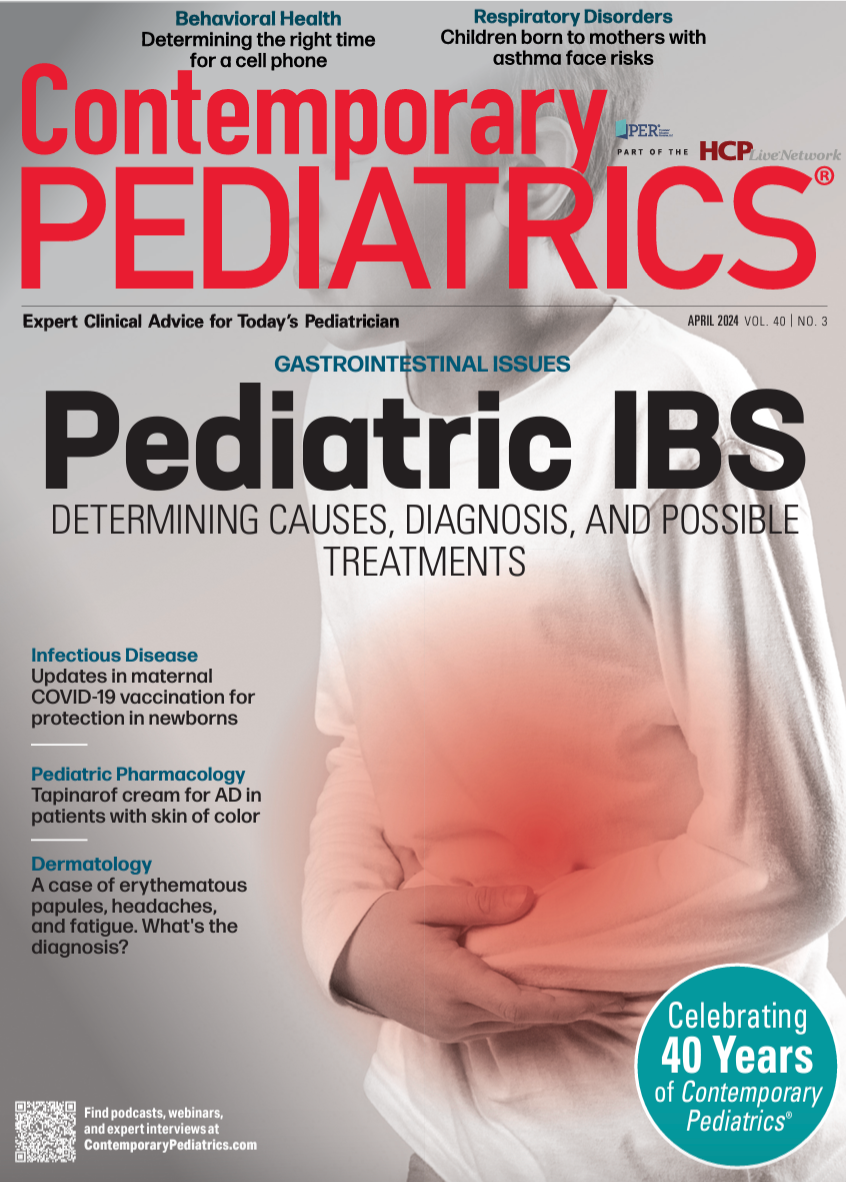Infants born into a digital world: Are there developmental inequities based on exposure?
Donna Hallas, PhD, PPCNP-BC, CPNP, PMHS, FAANP, FAAN, highlights the April 2024 issue of Contemporary Pediatrics.
Infants born into a digital world: Are there developmental inequities based on exposure? | Image Credit: © cendeced - © cendeced - stock.adobe.com.

The article by Candice Jones, MD, titled, What is the appropriate age for a cell phone?1, provides succinct, important information that pediatric, family, and psychiatric mental health nurse practitioners (NPs), can use to provide information to parents regarding digital safety information for their children from infancy through the adolescent years. Jones identifies multiple resources that NPs may use to create developmentally based anticipatory guidance for parents, school-age children, and adolescents in their practice.1 I highly recommend reading the article by Jones.1
Consider developmental inequities at each patient encounter
As I was reading Jones’ article, I began thinking about the digital world that many adults were not born into, and as practitioners, have struggled to learn, then embraced as better and improved ways of communicating. Today, practitioners are now engaged in the digital world every day in clinical practice from the electronic medical records (EMR) to search engines that help to locate the latest and best available evidence and/or clinical practice guidelines. My thoughts are that it has been an amazing journey that continues to astound us, as almost every day a new digital platform or idea emerges. Just think about how the latest versions of artificial intelligence have turned upside down the academic and practice worlds.
But then, I think about our marginalized patients and parents who have limited access to the digital world. I also think about highly educated parents who have made the decision not to introduce their infants and young children to cell phones or other media. The question to consider is: “Are children who are raised without access to the digital world experiencing developmental inequities when they enter the preschool years?” This is a serious question to consider and discuss from a professional and research perspective. I have observed 2-year-olds able to place their tiny finger on an iPad and open a child’s game or a short child’s video. The child is developing new skill sets, including cognitive digital memory, ways to understand spatial arrangements, a variety of languages at early ages, and patterns for reacting to visual images and messages that were not previously available during infant and toddler development.
Parents who do not have access to the digital world, and parents who adamantly refuse to permit their children to have access, may be raising an infant and young child who presents to nursery school at 3 years old with cognitive digital inequities. One may argue that a 3-year-old will catch up quickly. However, one may also argue that brain development is so rapid during the first 3 years of life that those experiencing cognitive digital inequities may be disadvantaged as compared to their peers.
Research findings are limited
Heffler et al.2 reported on a multicenter US study that investigated the relationship between early life digital media exposure (e.g. early life television and media exposure) and the outcome of atypical sensory processing. Data were collected for 1471 children from 2011 to 2014 and analyzed in 2023.2 Findings suggested that digital media exposure may be a risk factor for the development of atypical sensory profiles.2 However, this study focused on parent reports of television exposure and media exposure during the infant-toddler years, rather than digital exposure.2 The authors recommend the design and implementation of further rigorous research studies to investigate infant-toddler development.
Another study investigated responses of a 7-month-old infant exposed to a tablet device so the infant could facetime with the grandparents and a 22-month-old cousin of the 7-month-old, who had her own apps on the mother’s smartphone.3 In this study, the 22-month-old developed independent interactions with iDevices which demonstrated that the child was able to take photos, access and view photos and videos, as well as interact with the apps on her mother’s phone.3 Results further revealed that the 7-month-old and as she progressed in infancy was interested in what her cousin was doing with the iDevices. In addition, it was found that the 7-month-old, as she aged, also interacted independently with the devices.3
To date, there are limited studies investigating the development of infants exposed to the digital learning environment that exists today in comparison to children who are not exposed to new ways of learning. Developmental behaviors related to the new digital world need to be investigated to understand the newest ways infants and toddlers are developing, and to assess untoward consequences of infants and toddlers’ early exposure, and to prevent developmental cognitive inequities.
Click here for more from the April issue of Contemporary Pediatrics.
References:
1. Jones C. What is the appropriate age for a cell phone? Contemporary Pediatrics. 2024; 40(3);26-31.
2. Heffler KF, Acharya B, Subedi K, Bennett DS. Early-Life Digital Media Experience and Development of Atypical Sensory Processing. JAMA Pediatrics. 2024; 178(3):266-273.
3. Harrison E, McTavish M. ‘I’Babies: Infants’ and toddlers; emergent language and literacy in a digital culture of ‘i’Devices. Jouranl of Early Childhood Literacy. 2018;18(2):163-188.
